UBE4B, a microRNA-9 target gene, promotes autophagy-mediated Tau degradation
- PMID: 34078905
- PMCID: PMC8172564
- DOI: 10.1038/s41467-021-23597-9
UBE4B, a microRNA-9 target gene, promotes autophagy-mediated Tau degradation
Erratum in
-
Publisher Correction: UBE4B, a microRNA-9 target gene, promotes autophagy-mediated Tau degradation.Nat Commun. 2021 Jul 7;12(1):4257. doi: 10.1038/s41467-021-24572-0. Nat Commun. 2021. PMID: 34234153 Free PMC article. No abstract available.
Abstract
The formation of hyperphosphorylated intracellular Tau tangles in the brain is a hallmark of Alzheimer's disease (AD). Tau hyperphosphorylation destabilizes microtubules, promoting neurodegeneration in AD patients. To identify suppressors of tau-mediated AD, we perform a screen using a microRNA (miR) library in Drosophila and identify the miR-9 family as suppressors of human tau overexpression phenotypes. CG11070, a miR-9a target gene, and its mammalian orthologue UBE4B, an E3/E4 ubiquitin ligase, alleviate eye neurodegeneration, synaptic bouton defects, and crawling phenotypes in Drosophila human tau overexpression models. Total and phosphorylated Tau levels also decrease upon CG11070 or UBE4B overexpression. In mammalian neuroblastoma cells, overexpression of UBE4B and STUB1, which encodes the E3 ligase CHIP, increases the ubiquitination and degradation of Tau. In the Tau-BiFC mouse model, UBE4B and STUB1 overexpression also increase oligomeric Tau degradation. Inhibitor assays of the autophagy and proteasome systems reveal that the autophagy-lysosome system is the major pathway for Tau degradation in this context. These results demonstrate that UBE4B, a miR-9 target gene, promotes autophagy-mediated Tau degradation together with STUB1, and is thus an innovative therapeutic approach for AD.
Conflict of interest statement
The authors declare no competing interests.
Figures
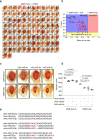
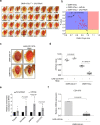
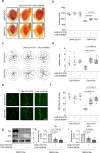
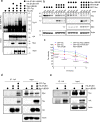
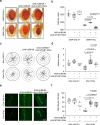
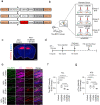
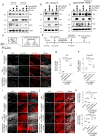
Similar articles
-
Treadmill exercise promotes E3 ubiquitin ligase to remove amyloid β and P-tau and improve cognitive ability in APP/PS1 transgenic mice.J Neuroinflammation. 2022 Oct 4;19(1):243. doi: 10.1186/s12974-022-02607-7. J Neuroinflammation. 2022. PMID: 36195875 Free PMC article.
-
Inhibition of high-fat diet-induced miRNA ameliorates tau toxicity in Drosophila.Biochem Biophys Res Commun. 2024 Nov 12;733:150446. doi: 10.1016/j.bbrc.2024.150446. Epub 2024 Jul 25. Biochem Biophys Res Commun. 2024. PMID: 39067249
-
Hrd1 facilitates tau degradation and promotes neuron survival.Curr Mol Med. 2012 Feb;12(2):138-52. doi: 10.2174/156652412798889009. Curr Mol Med. 2012. PMID: 22280354
-
Tau degradation: the ubiquitin-proteasome system versus the autophagy-lysosome system.Prog Neurobiol. 2013 Jun;105:49-59. doi: 10.1016/j.pneurobio.2013.03.001. Epub 2013 Mar 23. Prog Neurobiol. 2013. PMID: 23528736 Review.
-
The role of ubiquitin proteasomal system and autophagy-lysosome pathway in Alzheimer's disease.Rev Neurosci. 2017 Nov 27;28(8):861-868. doi: 10.1515/revneuro-2017-0013. Rev Neurosci. 2017. PMID: 28704199 Review.
Cited by
-
Effects of Intrahypothalamic Administration of microRNA Inhibitors and Mimetics on Blood Plasma Biomarkers in the Rat Aging.Dokl Biochem Biophys. 2024 Dec;519(1):521-524. doi: 10.1134/S1607672924701138. Epub 2024 Sep 16. Dokl Biochem Biophys. 2024. PMID: 39283557
-
Potential mechanisms of non-coding RNA regulation in Alzheimer's disease.Neural Regen Res. 2026 Jan 1;21(1):265-280. doi: 10.4103/NRR.NRR-D-24-00696. Epub 2024 Dec 7. Neural Regen Res. 2026. PMID: 39851253 Free PMC article.
-
Pharmacotherapies for the Treatment of Progressive Supranuclear Palsy: A Narrative Review.Neurol Ther. 2024 Aug;13(4):975-1013. doi: 10.1007/s40120-024-00614-9. Epub 2024 May 14. Neurol Ther. 2024. PMID: 38743312 Free PMC article. Review.
-
Stub1 promotes degradation of the activated Diaph3: A negative feedback regulatory mechanism of the actin nucleator.J Biol Chem. 2024 Oct;300(10):107813. doi: 10.1016/j.jbc.2024.107813. Epub 2024 Sep 23. J Biol Chem. 2024. PMID: 39322015 Free PMC article.
-
Simple model systems reveal conserved mechanisms of Alzheimer's disease and related tauopathies.Mol Neurodegener. 2023 Nov 10;18(1):82. doi: 10.1186/s13024-023-00664-x. Mol Neurodegener. 2023. PMID: 37950311 Free PMC article. Review.
References
-
- Ballatore C, Lee VM, Trojanowski JQ. Tau-mediated neurodegeneration in Alzheimer’s disease and related disorders. Nat. Rev. Neurosci. 2007;8:663–672. - PubMed
-
- Haass C, Selkoe DJ. Soluble protein oligomers in neurodegeneration: lessons from the Alzheimer’s amyloid beta-peptide. Nat. Rev. Mol. cell Biol. 2007;8:101–112. - PubMed
-
- Lee VM, Goedert M, Trojanowski JQ. Neurodegenerative tauopathies. Annu. Rev. Neurosci. 2001;24:1121–1159. - PubMed
-
- Sarkar S. Neurofibrillary tangles mediated human neuronal tauopathies: insights from fly models. J. Genet. 2018;97:783–793. - PubMed
Publication types
MeSH terms
Substances
LinkOut - more resources
Full Text Sources
Other Literature Sources
Medical
Molecular Biology Databases

